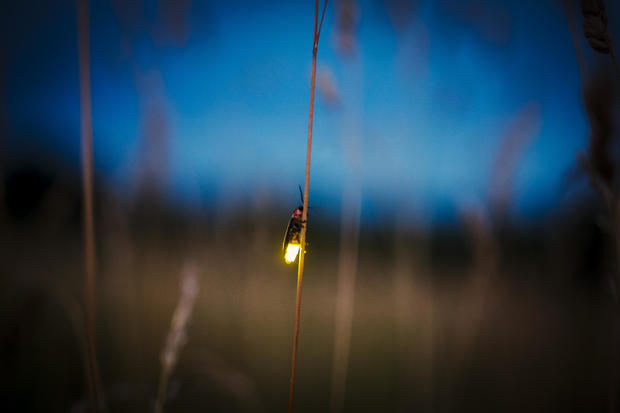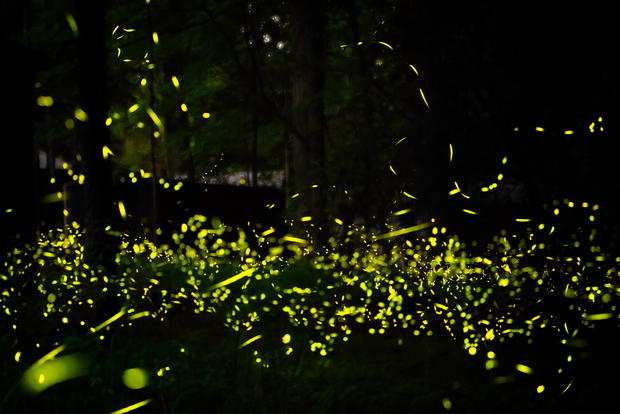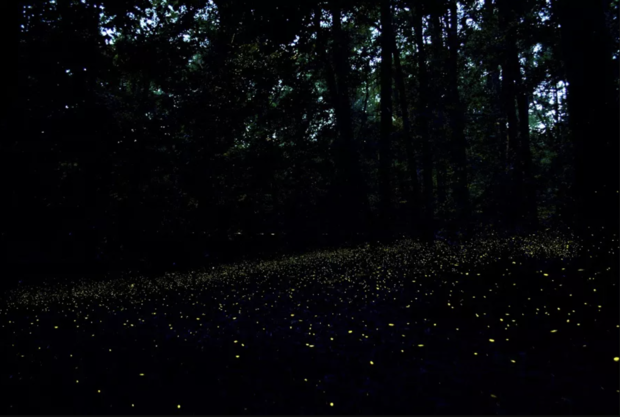Why fireflies are only spotted in summer and where lightning bugs live the rest of the year
Firefly fans who'd like to see lightning bugs year-round are out of luck.
The insect, which is a type of beetle, is usually seen only between spring and summer, with different species emerging at different times. The first fireflies of the season come out later in the year as you move farther north.
The fireflies people see glowing and flying around are adults, said Sara Lewis, author of "Silent Sparks: The Wondrous World of Fireflies." Their time aboveground before dying is brief, with fireflies actually spending the bulk of their lives living underground.
"One of the very surprising things about fireflies is that the ones that we're used to seeing — the very charming, ethereal adults that are flying around in summertime — they have a backstory," Lewis said. "They are really just the back end of a firefly life cycle."
The firefly life cycle
During their brief time as adults, fireflies are focused on reproduction. Some are so focused on it that they don't even eat, according to the U.S. Fish & Wildlife Service.

Most of the firefly species in the U.S. — there are around 170, according to Lewis — lay eggs in soil, moss or at the base of plants. They look for areas that are moist because the eggs are tiny, soft and dry out easily. It takes about two weeks for the firefly larvae to hatch.
"If they dry out during that period, they're dead," Lewis said.
The eggs are about the size of a pinhead, according to Candace Fallon, senior conservation biologist at the Xerces Society for Invertebrate Conservation, said.
After the eggs hatch, the larvae burrow into the ground, where they spend the next one to two years, depending on the species. After the larvae stage, there's a brief stage as pupae before the adults emerge.
Growing up underground
Though juvenile fireflies glow, they're very different from the adults people are used to seeing.
"Adult fireflies are really just the tip of the firefly iceberg," Lewis said.
While adults aboveground are focused on reproduction, fireflies are similar to teenagers in their juvenile stage: focused on eating and growing, Lewis said. They eat snails, slugs and earthworms. They have sharp jaws and inject paralyzing neurotoxins into their prey.
"The larvae are incredibly voracious predators, they're really fierce," Lewis said.
When cold weather arrives, the larvae burrow down below frost level and don't move around until it warms up in the spring, when they burrow back up again, Lewis said.
The larvae also don't look like the adult fireflies people are used to seeing; they look more similar to pill bugs, commonly known as roly poly.
After the larva stage, fireflies have a short stage as a pupa before emerging as adults.
The next generation of fireflies
Adult fireflies in the southern U.S. start to emerge in March, April and May, while they begin coming out in June and July further north, Fallon said.
There are three general types of fireflies in the U.S., Fallon said. There are daytime dark fireflies, which are active during the day and use pheromones rather than lights to communicate. There are also glowworms. Male glowworms, which generally don't light up, have enormous eyes. They look for flightless females giving off dim light on the ground.

The there's the flashing species, which is the kind most people recognize.
"Those flashes are directly related to courtship in the adults. Each species has a species-specific flash pattern it uses," Fallon said. "Typically the males will be flying around flashing a specific single, searching for a female. And if a female is interested, she'll have her own specific flash that she'll flash back to this male."
When not searching for a mate and focusing on reproducing, the fireflies might rest in the crevices of bark or in vegetation. They'll hang out in areas where they can get some protection from predators and in moist areas.
Threats facing fireflies
Fireflies need moisture in each of their life cycles, Lewis said. It's not just the eggs that can dry out; larvae and pupae can also dry out and die if there's not enough moisture. Drought is one of the most serious threats faced by fireflies.
About 10% of the firefly species in the U.S. are not doing well, Lewis said. Some of the firefly species most vulnerable to extinction need very specific habitats to survive.
Light pollution is also a threat to fireflies. It can prevent male and female fireflies from finding each other so they can mate, reducing the population of the next generation of fireflies.

"Love can be hard to find for even the brightest of fireflies," according to the Fish and Wildlife Service. "Even the interfering light of a full moon can outshine their visual morse code, making it impossible for males and females to recognize each other. Light pollution from towns, factories and roads have been seriously killing the buzz for these insects"
Overuse of pesticides is also impacting lightning bug species everywhere. Fallon advises being conscientious of the fireflies when taking care of lawns. She suggests mowing less often or leaving the grass taller. If possible, leave some corner of the yard a bit wild so the fireflies — eggs, larvae, pupae and adults — have a safe space.
The advice applies year round, not just in the spring and summer when flashes of light are visible.
"So many just people just think about fireflies when they're these flashing adults for a few weeks in the summer, but the reality is that they're present all year long, we're just not noticing them or seeing them," Fallon said.
- In:
- Fireflies
Aliza Chasan is a Digital Content Producer for "60 Minutes" and CBSNews.com. She has previously written for outlets including PIX11 News, The New York Daily News, Inside Edition and DNAinfo. Aliza covers trending news, often focusing on crime and politics.
TwitterDisclaimer: The copyright of this article belongs to the original author. Reposting this article is solely for the purpose of information dissemination and does not constitute any investment advice. If there is any infringement, please contact us immediately. We will make corrections or deletions as necessary. Thank you.




